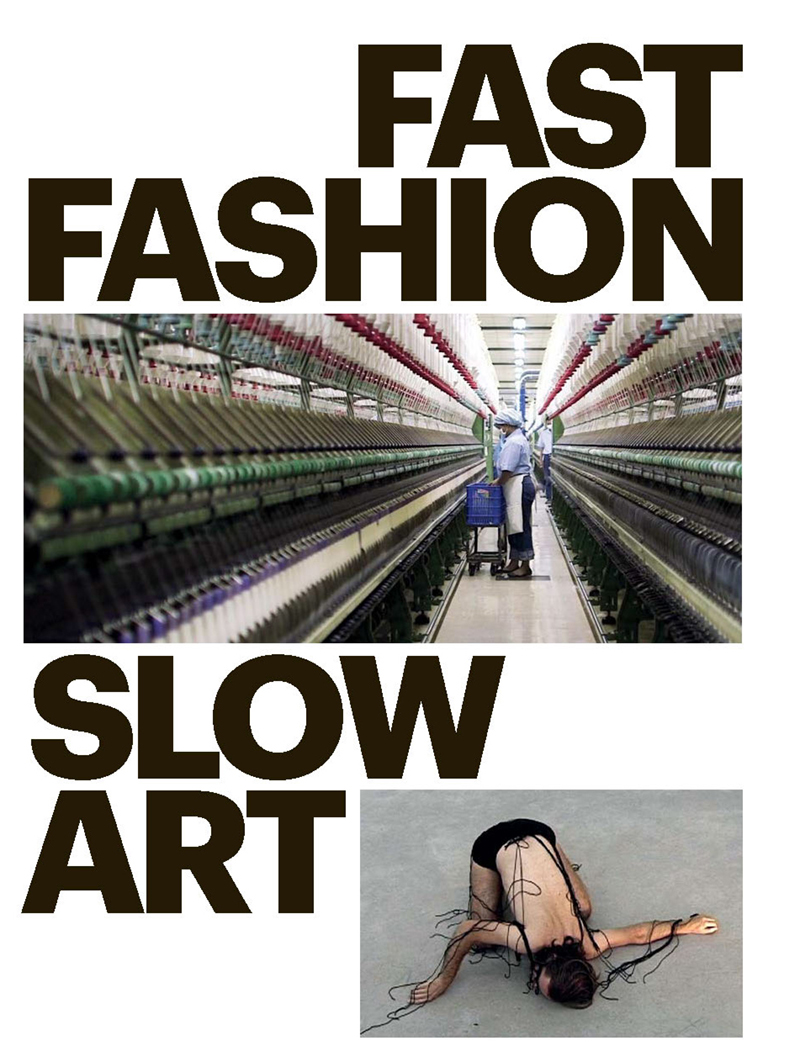Finding “Fast Fashion”
By Bowdoin College Museum of Art
“How are our clothes actually made?” This question inspired Phyllis Rosenzweig, curator emerita at the Hirshhorn Museum and Sculpture Garden, and Bibiana K. Obler, associate professor of art history at the Corcoran School of Arts and Design at George Washington University, to create the exhibition Fast Fashion/Slow Art, opening January 30 at the Bowdoin College Museum of Art. The exhibition features international contemporary artists and filmmakers whose works highlight the production of affordable, mass-produced clothing in places ranging from Guanzate, Italy to Xi’an, China, as well as Maine’s history of textile production. The range of locations reflects Obler’s belief that the exhibition “had to be international because these are international issues.” Included below are excerpts of a conversation about the exhibition between the co-curators and Allison Martino, postdoctoral curatorial fellow, and Horace Wang, student curatorial assistant.
BCMA: What were the sources of inspiration for developing an exhibition about fast fashion?
Bibiana K. Obler: There are so many different origin stories for the exhibition. This exhibition came about through many different conversations revolving around the question of “how are our clothes actually made?” We thought about “what do people want to learn about?” and “what don’t we know?” We have these clothes and we have a notion of the process of production, but I’m still curious about so much more. The exhibition is not comprehensive, but it does it give you more of the picture of what it’s like to make our clothes.
BCMA: How did your past work and background inform what you brought to this exhibition and your understanding of fast fashion?
Phyllis Rosenzweig: My background is not academic, but in museum work and exhibition. I love working with artists, I feel very strongly about photography and video, so I was very drawn to the possibility of doing a show highlighting these media. It was exciting to be working on a project that would bring in all kinds of audiences.
BKO: I know exhibitions, for the most part, through going to them. It was also extremely rewarding to be able to teach in relation to the exhibition.
BCMA: What connections do you see between the venues of D.C., where the exhibition was on display at the Corcoran School of the Arts and Design at George Washington University, and Brunswick to feature these international perspectives on fast fashion?
PR: I think that was one of the intriguing ideas about doing this show in D.C. So much labor and trade policy is made here.
BKO: It was exciting that people who work on these issues for their careers are just down the street from us. And Maine, specifically Brunswick, is so exciting because it was historically a place where textiles were made; there are many of these places in the United States and many mills that are no longer functional. D.C. and Brunswick have such different ways of intersecting with those histories, and it is intriguing to us to see how it will play out at Bowdoin.
BCMA: What do you hope viewers will take away from the exhibition?
PR: I hope that it will make people ask questions. One thing we tried to do is to not offer a solution because every solution to fast fashion has its own drawbacks. We hope that viewers will take away that this is a complex question.
BKO: I hope that it begins a conversation. We should open ourselves up to these complicated questions more often.
Fast Fashion/Slow Art will be on view at the Bowdoin College Museum of Art from January 30 through August 2, 2020.
Horace Wang ’20, Student Curatorial Assistant
Allison Martino, Postdoctoral Curatorial Fellow
Bowdoin College Museum of Art